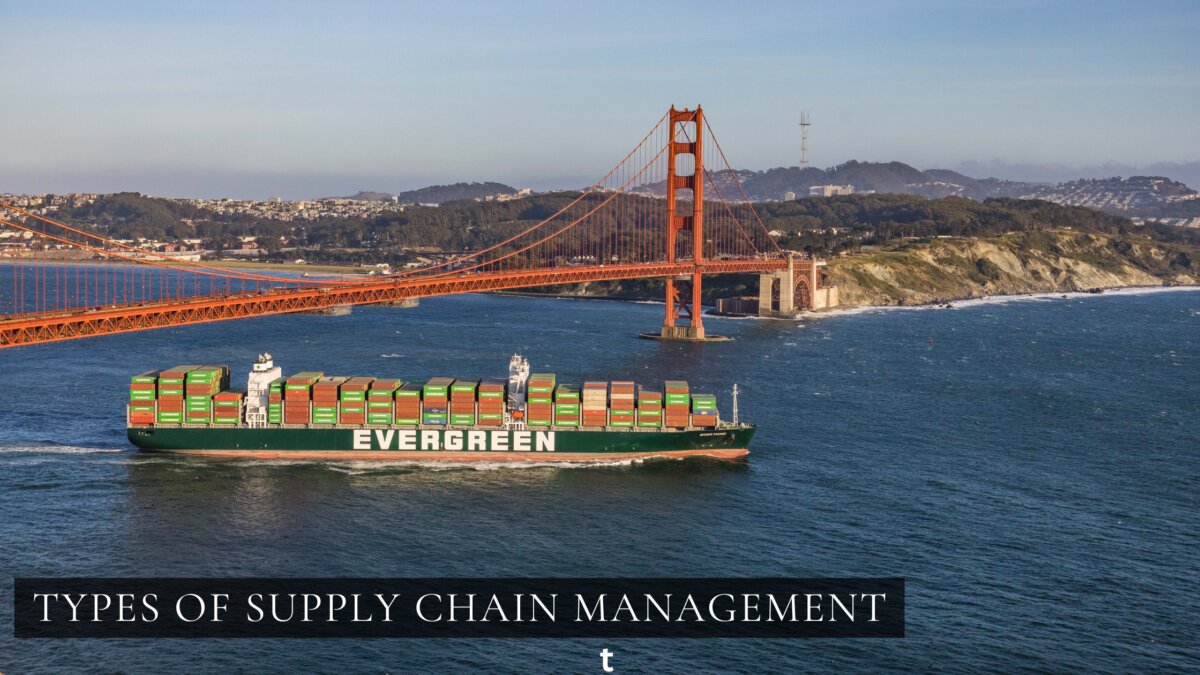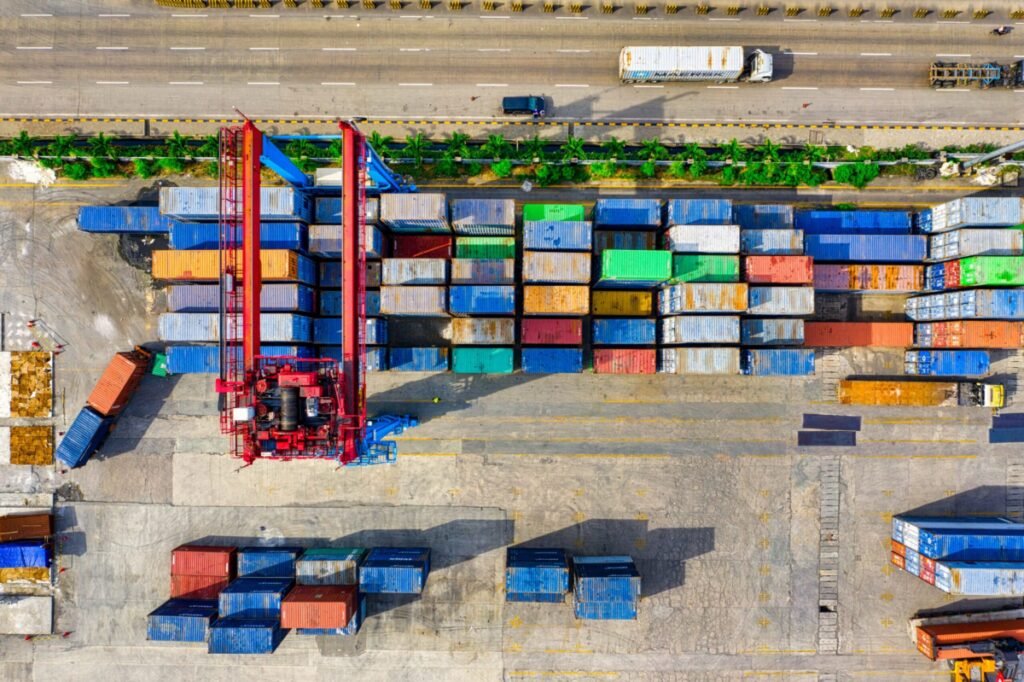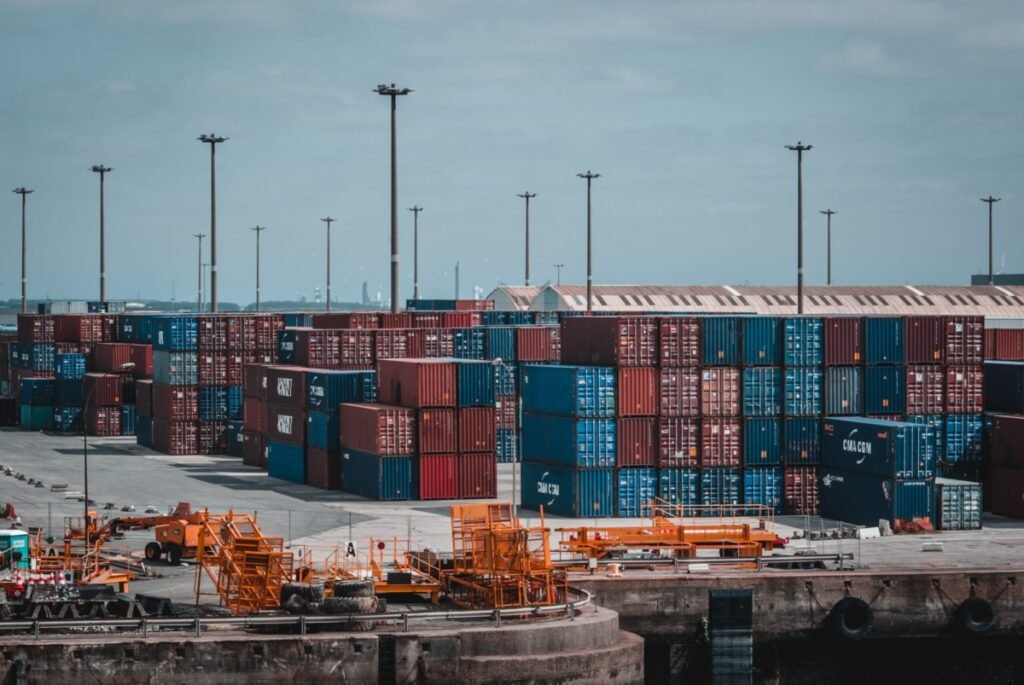TYPES OF SUPPLY CHAIN MANAGEMENT [TOP 7 EXPLAINED]

If you order an iPhone from the apple store, you will notice that apple is not precisely delivering the product on its own. All the iPhones available in apple stores are majorly manufactured at the Shinsen assembly plant in China. But before that, raw material suppliers from around the world delivered the goods needed to manufacture an iPhone to this assembly site. Once the product is assembled, it gets shipped to the storage warehouse and then to your doorstep by FedEx or UPS. All of this is possible because of the different types of supply chain management.
What is Supply Chain?
A supply chain is a network that connects a firm and its suppliers in order to manufacture and distribute a certain product. The supply chain represents the steps to get the product or service to the customer.
The supply chain starts with suppliers. The supplier is the person who provides raw materials to manufacture to produce a product. After that, those manufacturers convert those raw materials into finished goods ready to use.
For example, plastic is the raw material used to manufacture a chain, and a chair is a finished product. The Manufacturer transfers the finished goods to the distributor. The distributor transfers to the wholesaler, wholesale transfers to the retailer, and finally, the retailer transfers the goods to the customer. This is the supply chain.
Types of Supply Chain
Supply chains are of 3 types:
1. MTO
MTO stands for Make to Order. Manufacturing begins only once a customer’s order is received in this supply chain. When there is a demand, for example, an assembly process begins.
This is also known as “Pull-type supply chain operations” because manufacturing is performed when demand is confirmed. For example, if you have mobile manufacturing, you will start the manufacturing process only after receiving the customer’s order. This is called Make to Order.
2. MTS
MTS stands for Make to Stock. Make-to-stock is the supply chain where products are manufactured based on demand forecasts. Because precise predictions can reduce excess inventory and opportunity loss due to stock outs, the problem here is determining how to forecast demand accurately. Most businesses rely on the dedicated supply chain planning software to precisely assess demand and optimize multi-echelon inventory.
For example, retail stores like Walmart work on Make to Stock.
3. CTO
CTO stands for Customized to Order. It is the combination of Make-to-stock and Make to Order. For example, you want to assemble your computer. You want RAM of 10 GB, internal memory of 1 TB, and a monitor of a specific company.
A manufacturing company will make its stock ready. They will assemble all the parts according to your will. That is Make to Order. This supply chain process will be known as Customize to Order.

What is Supply Chain Management?
The management of the flow of products and services is known as supply chain management. It entails the transportation and storage of raw materials, work-in-process inventory, and finished commodities from their point of origin to their final destination.
Interconnected or interlinked networks channels and node businesses are involved in providing products and services required by end customers. Supply chain management involves the design, planning, execution, control, and monitoring of supply chain activities.
The goals are to create net value, construct a competitive infrastructure, leverage global logistics, synchronize supply and demand, and measure performance internationally.
Supply chain management draws heavily from the areas:
- Operations Management
- Logistics
- Procurement
- Information Technology
Benefits of Supply Chain Management:
- Provide exemplary customer service.
- Improve customer services.
- Improve the relationship between buyers and suppliers.
- Reduce the cost through the supply chain.
- Easy to analyze the demand and supply of products and services.
- Minimize delays.
- Proper inventory levels in the chain management.
- It helps in achieving success.
- Reduce the level of inventory.
- Demand management.
- Adequate flow of goods and services or information.
- System efficiency.
- Reduce the uncertainty along with the chain.
- Improve quality.
- Minimize the time.
- Improving the visibility demand.

Types of Supply Chain Management
There are two main types of supply chain management:
1. Vertical Supply Chain Management
The vertical supply chain is the management style that brings large portions of the supply chain not only under common ownership but also into one corporation. One technique for eliminating the hold-up problem is to use a vertical supply chain.
A vertical monopoly is a monopoly created through vertical integration. The extent to which a company owns its upstream suppliers and downstream buyers is referred to as the sheer supply chain.
This is typified by one form engaged in different parts of production. There are two varieties of vertical supply chain management:
Backward Vertical
Backward vertical integration occurs when a corporation controls subsidiaries that manufacture part of the inputs used in the production of its products. A car company, for example, may own a tire company, a glass company, and a metal company.
Control of these three subsidiaries is meant to assure a continuous supply of inputs and quality in their ultimate product. It was the principal business strategy of Ford and other automobile manufacturers in the 1920s, who attempted to reduce costs by merging the production of automobiles and automobile parts, as typified by the Ford River Rouge Complex.
Forward Vertical
When a firm owns distribution hubs and retailers where its products are sold, it is moving toward forward vertical integration. The Carnegie Steel Company, for example, was one of the first, largest, and most well-known examples of vertical integration.
The company controlled not only the steel mills, but also the mines from which the iron ore was extracted, the coal mines from which the coal was supplied, the ships that transported the iron ore, the railroads that transported the coal to the factory, the coke ovens where the coal was cooked, and so on.
The company also focused heavily on developing talent internally from the button-up rather than importing it from other companies. Later, Carnegie even established an institute of higher learning to teach the steel process to the next generation.
Oil industries oil companies, both multinational and national, often adopt a vertical management structure. This implies they are involved in all aspects of the supply chain, from discovering deposits to drilling and extracting crude oil, transporting it around the world, refining it into petroleum products like petrol/gasoline, and distributing the fuel to company-owned retail stations for sale to customers.
Benefits of Vertical Supply Chain Management
- Control
- No dependency on components or services
- Operations can be synchronized with other companies’ functions.
2. Horizontal Supply Chain Management
Horizontal supply chain management is the acquiring of businesses at the same level of the supply chain. For example, manufacturers buy from other manufacturing companies.
The result can be obtained by internal or external expansion through acquisition or mergers. For the integration to be horizontal, the company must offer similar products and services.
Horizontal supply chain management is most effective when the organization’s industry is growing, and competitors lack the capabilities and skills the company already possesses.
The company also needs sufficient resources to manage the acquired or merged company. For example, In 2012, Facebook decided to utilize horizontal integration through the acquisition of Instagram for a reported $1 Billion.
They operated in the social media industry and were in similar stages of service. Facebook saw this as an opportunity to grow, reduce competition, and access new audiences.
To battle creative stagnation and market saturation, the Walt Disney Company bought Pixar animation studios in 2006. Another example of a horizontal supply chain is an acquisition cost of $7.4 Billion but fought for ‘the cutting- edge technology’ in a vision more innovative than ever.
Benefits of Horizontal Supply Chain Management
- Expand the market by purchasing companies in another geographic location.
- Gain resources common to different products.
- Reduce the cost of international trade.

How does Supply Chain Management work?
A supply chain is a coordinated network. Therefore, my supply chain management system must also have a cohesive structure that enables functionality and visibility along the product delivery journey.
As such, a supply chain management system would typically integrate features such as inventory management, warehouse management, purchase-order processing, demand forecasting, supplier relationship management, logistics planning, and so on.
5 Basic Functions of a Supply Chain
1. Plan
- Access all supply chain resources like people, materials, equipment, activities, and information.
- Aggregate and prioritize demand requirements. These demand requirements are generated by the customer.
- Plan inventory, distribution, production, and raw materials.
- Plan on having enough capacity for all items and distribution channels. A distribution channel is a path that transports supply downstream to the client.
- The objective is to develop a strategy to balance the resources with these demand requirements.
2. Source
- These are the activities needed to acquire materials to create products.
- Activities such as purchasing, receiving, and inspections hold an issue of inventory.
- Sourcing includes everything from obtaining raw materials to finished goods and professional services.
- The source function is simple to procure materials and services to meet demand.
3. Make
- These are activities required to develop the product. This includes requests and receiving materials, building and testing a product, packaging, holding then releasing for delivery.
- The focus within this function is to transform materials and services to meet demands.
4. Delivery
- These are activities needed to deliver the product to the customer. For example, generating quotes for the customer, configuring or installing the product or service, managing payments and invoicing, executing warehouse orders to ship the products, and maintaining customer relations through the support lifecycle.
- The delivery function supports processes that provide the finished product and services to meet demand.
- The goal of the delivery function is to ship the right products in the right quantities to the right place at the right time. But in reality, this may not always be the case, so we need to plan for a reverse supply flow.
5. Return
- These are activities required to receive product returns. This would include receiving defective, incorrect, or excess returns.
- This activity could also include warranty verification, administration, and replacement.
- Recycling and sustainability. For example, you are returning empty ink cartridges.
Source : zoetalentsolutions.com



